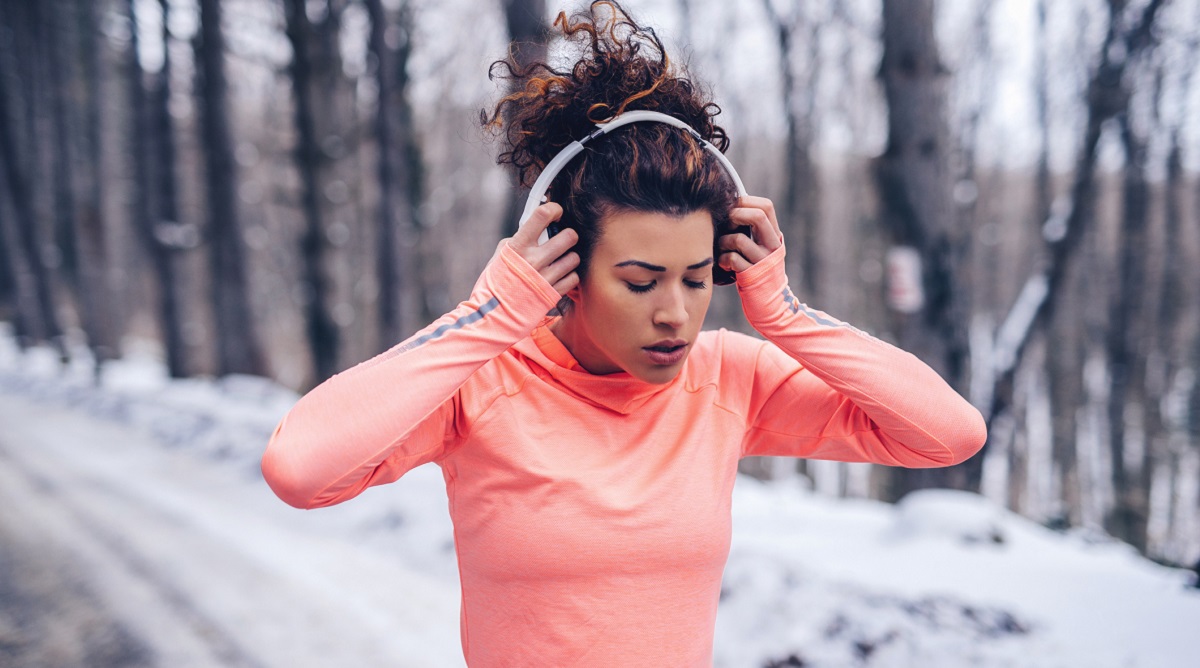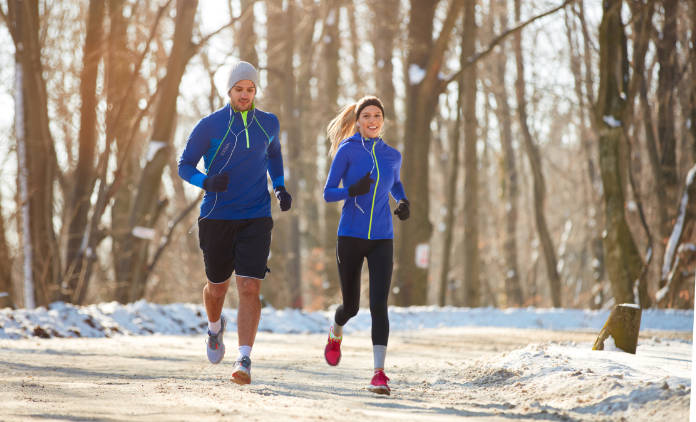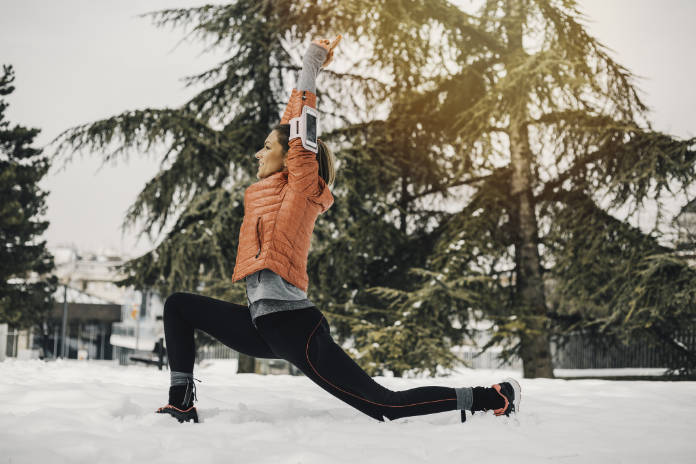Snow is great news for people who love nothing more than Instagramming snow selfies, but pretty disastrous if you’re in the middle of training for a marathon. We spoke to experts to find out how to run in the snow safely.
Snow is notoriously one of the worst weather conditions to run in – it’s cold, it’s wet and it’s slippy. However, you shouldn’t let the white stuff derail your game plan completely.
How to run in the snow
Here, we’ve run down our top tips for staying safe while running in the snow. Thermals at the ready…
1. Invest in some snow-proof shoes
Those super lightweight sprint shoes that powered you through summer simply won’t cut it in icy conditions. Sturdy-soled running shoes with widely spaced lugs, like La Sportiva’s Tempesta GTX shoe (Amazon), are a great investment for winter runners who are looking for that extra bit of grip in the frost. Look out for trainers with a Gore-Tex waterproof membrane that will stop the snow from soaking through your socks and chilling your feet.
If you don’t want to invest in a whole new shoe, you can spend a bit less by getting a pair of ice grips (Amazon) that slip over your current pair. These are simple but effective, with steel studs underneath that fasten to the bottom of your shoe and add that much-needed extra traction while running on ice and slush.
2. Layer up
The key here is to resist the temptation to wrap up too much, as you’ll easily overheat once your muscles warm up. As a rule, it’s OK to be a little bit chilly to begin with. A thermal base layer, running tights, and a breathable waterproof running jacket are all key for mastering sub-zero conditions.
Regatta Women’s Imber II Waterproof and Breathable Hooded Active Hiking Shell Jacket, Amazon.
Think about protecting your core, as this is where the heart, lungs, and large arteries are located, and make sure you layer with technical fabrics, to wick sweat, with zips at the neck so you can allow for ventilation. A good pair of thermal gloves, a winter hat or headband (to keep ears warm), and a sports snood will be your best friend too.
3. Go slow
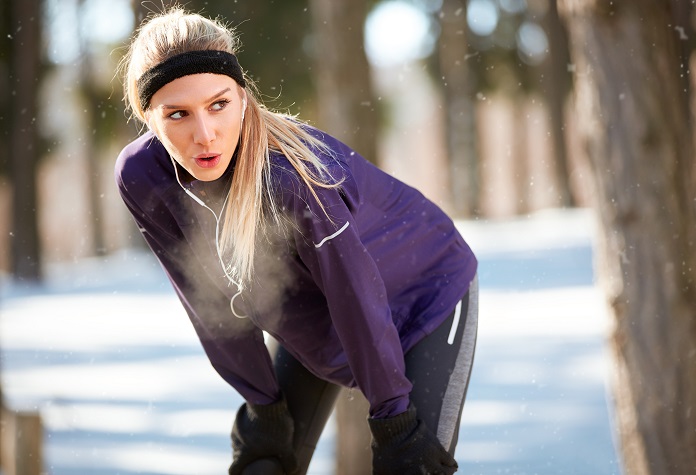
Snow days are not the time to work on your interval training, as it’s a lot easier to slip and injure yourself. Maintain a safe and steady pace and lengthen your run route if you want to feel the burn.
Be cautious and give yourself a break from high speeds so you can err on the side of caution, and when you hit patches of ice – just walk.
4. Watch for traffic
Snow and ice not only increase a runner’s risk of slipping, but also the vehicles on the road too. Try to change your run route so you aren’t running alongside traffic.
If this isn’t possible, always try to position yourself facing the traffic so you can see what’s happening ahead of you.
5. Stretch beforehand
In cold weather, your body takes longer to warm up properly, so getting a good stretch in beforehand is really important.
A set of warm-up stretches, lunges, and gentle jogging on the spot will gently prepare the body for exercise by gradually increasing your heart rate and circulation. This will also loosen the joints and increase blood flow to the muscles, preventing you from injury ahead of race day.
6. Hydrate like you’re running in the summer
The body loses a lot of fluids in winter through watering eyes, dripping noses, and body sweat under warm layers. Because sweat evaporates quickly in the cold weather, winter conditions don’t trigger the thirst response like warm weather does, and many of us can forget to carry water.
Proper hydration during winter running is necessary to keep muscles healthy and help you to perform at your best – so make sure you’re taking regular sip breaks on your runs.
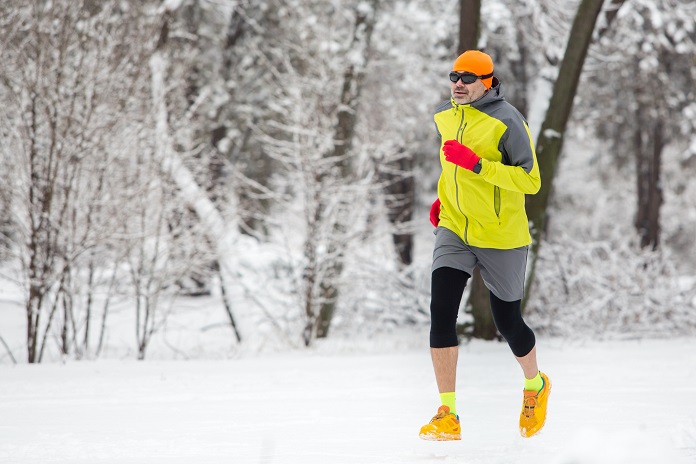
7. And finally… enjoy it
Even though it can be difficult to get to grips with it, nothing beats the novelty of running in a fresh blanket of white snow. The air feels fresher, the sky looks brighter and even the dullest urban trail looks pretty spectacular. Oh, and that hot, post-run shower will feel better than ever.
You may also be interested in…
This article may include affiliate links to products and services where we may receive a small fee to support the running of this site if you make a purchase or is a sponsored article from one of our select editorial partners providing valuable advice and information to our readers.























































